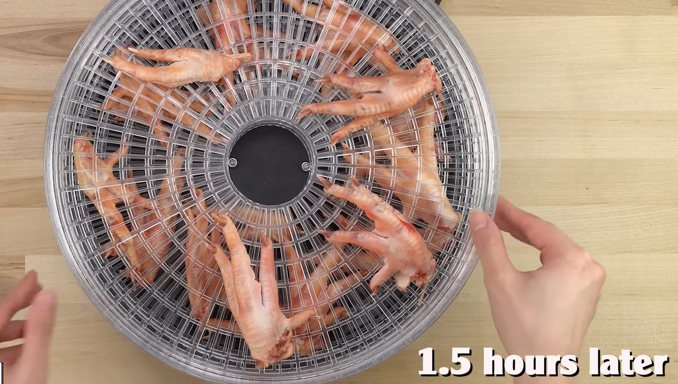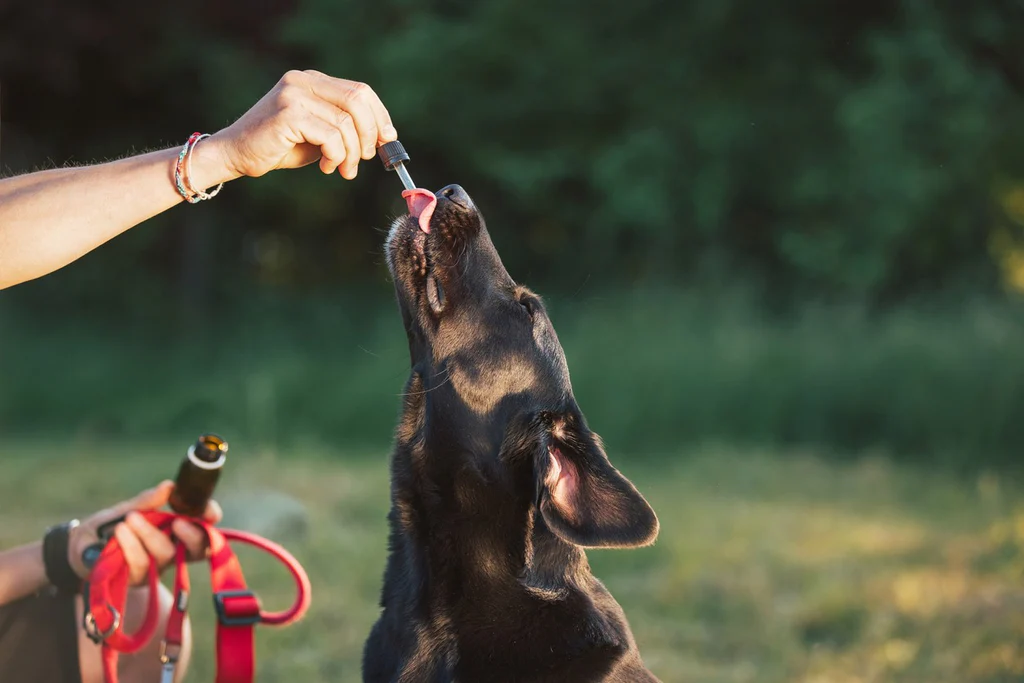Chicken Feet for Dogs – Information You Need!
For many pet owners, making sure their pets are healthy is a top priority. One way to keep your pup happy and healthy is to give them nutritious yet tasty treats. While some may be hesitant about offering chicken feet to their pup, doing so could provide numerous health benefits that you wouldn’t want your furry friend to miss out on!

In this blog post, we’ll discuss the nutritional value of raw chicken feet for dogs and why they should be given as part of a balanced diet. From helping maintain strong bones and teeth to being an excellent source of various vitamins and minerals, find out why adding these miracle poultry pieces can help canine companions become stronger inside and out!
For centuries, chicken feet have been considered a delicacy for many cultures around the world, from Asia to the Caribbean. But did you know that they can be beneficial additions to your pup’s diet as well? With their protein content, hydrating benefits, and other key nutrients such as calcium and glucosamine, chicken feet are an excellent option for adding variety and healthfulness to your dog’s meals.
Benefits of Chicken Feet for Dogs
Chicken feet are a great snack and treat for dogs. They contain important vitamins and minerals that can help keep your dog healthy and happy.
Nutritional Benefits
Chicken feet offer a variety of nutritional benefits for dogs, including proteins, amino acids, essential fatty acids, calcium, phosphorus, magnesium and other trace minerals. These nutrients can help keep your dog’s coat, skin and nails healthy.
Dental Health Benefits
The crunchy texture of chicken feet helps to clean the teeth, remove plaque build-up and prevent gum disease. This helps to keep your dog’s teeth and gums healthy by preventing tartar and tooth decay.
Joint Health Benefits
Chicken feet are rich in glucosamine, which helps to keep your dog’s joints strong and flexible. Glucosamine can also help reduce inflammation associated with arthritis or other joint conditions. These benefits make chicken feet an excellent choice for older dogs who need extra joint support.
Digestive Benefits
The cartilage in chicken feet is also a great source of dietary fiber, which helps to keep your dog’s digestive system running smoothly. This can help to prevent constipation and diarrhea while improving nutrient absorption.
Overall, chicken feet are a nutritious snack that can provide a variety of benefits for your dog’s health. They are an affordable and delicious option that can help to keep your pet happy and healthy.
They provide essential vitamins and minerals, help to promote joint health and support dental hygiene, and can keep your pet’s skin and coat looking its best. Plus, since they’re low in fat and high in protein, chicken feet are sure to satisfy even the pickiest dogs!
How to Prepare Chicken Feet for Your Dog
1. Gather the Necessary Supplies: Before you begin preparing chicken feet for your dog, make sure you have the necessary supplies on hand. You will need a large saucepan, tongs or a slotted spoon, and a cutting board with a sharp knife.
2. Boil the Chicken Feet: Fill the saucepan with water and bring it to a boil over medium-high heat. Gently add the chicken feet to the boiling water and reduce the heat to low. Allow the chicken feet to simmer for 25 minutes or until they are cooked through.
3. Remove Chicken Feet from Water: Once the chicken feet have finished cooking, use the tongs or slotted spoon to remove them from the boiling water and place them on a cutting board.
4. Separate Joints (if desired): Using the sharp knife, carefully separate the joints of each chicken foot by cutting through the tendon that runs along each side of the bone. This will make it easier for your dog to chew and digest the chicken feet.
5. Cut Feet into Bite-Sized Pieces (if desired): Once you have separated the joints, cut each chicken foot into bite-sized pieces and transfer them to a bowl or plate for serving.
6. Serve to Your Dog: When ready, offer your dog the prepared chicken feet as an occasional treat. Serve the chicken feet either raw or cooked, depending on your preference and your dog’s dietary needs. Store any uneaten chicken feet in a sealed container in the refrigerator and discard after 3-4 days.
How Often to Give Your Dog Chicken Feet?
Chicken feet can be a great nutritional treat for dogs, as they are high in glucosamine and other nutrients that help promote joint health. However, it is important to remember that chicken feet should not replace regular meals or snacks, but rather be used as an occasional treat.
The amount of chicken feet you give your dog depends on their size, age, and activity level. For example, a smaller dog or puppy may only need one chicken foot per week, while a larger dog could have two or three. If you’re unsure how many chicken feet to give your dog, talk to your veterinarian.
When giving your dog chicken feet, it’s important to monitor their reaction to the treat. If your dog shows signs of gastrointestinal upset, such as diarrhea or vomiting, then stop feeding chicken feet and consult with a veterinarian.
It is possible to feed your dog chicken feet every day, but it is important to remember that the amount should be adjusted accordingly. For instance, a smaller dog or puppy may only need one chicken foot per day, while a larger breed could have two or three depending on their size and activity level. It is important to monitor your dog’s reaction and watch for any signs of digestive upset.
Risks Associated with Feeding Your Dog Chicken Feet
Although chicken feet can be a nutritious treat for dogs, it is important to keep in mind that there are some risks associated with feeding your dog this type of treat. It is possible for chicken feet to contain bacteria or other contaminants, so it’s best to purchase from a reputable source and cook the feet thoroughly before serving them to your pet.
Additionally, chicken feet can be a choking hazard if they are not cut into small pieces before giving them to your pet. To reduce the risk of choking, make sure that you always cut the feet into bite-sized pieces and monitor your dog while they eat.
Finally, it is important to remember that chicken feet should not replace regular meals or snacks for your pet. Chicken feet should only be given as an occasional treat and not as a meal replacement.
How Can I Find Chicken Feet for My Dog?
If you are looking for chicken feet for your dog, there are several sources you can turn to. One place to check is your local pet store or supermarket. Many stores carry a variety of treats and chews that are suitable for dogs, including chicken feet. You may also be able to find them online from websites that specialize in pet food and treats.
If you are looking for a more natural source of chicken feet, you can try contacting local farmers or ranchers. Many of them will be happy to provide you with the fresh feet. You can also look for vendors at your local farmer’s market who may sell them.
Finally, if you want to feed your dog fresh chicken feet, you can purchase them from a butcher or poultry producer. Make sure to ask for “free-range” and/or “pasture-raised” chicken feet if possible; this will ensure the highest quality product for your pup.
*Note: The score is based on our AI score (Editor’s choice and rating).
Chewmax Pet Products Roasted Chicken Feet
Features
- Premium roasted 100% natural pet treats.
- Made from carefully sourced raw materials to produce the finest treats for your companion.
- Satisfies your dogs natural instinct to chew.
- They are rich in Protein, Calcium, Cartilage & Collagen
- Promotes joint health; contains Glucosamine & Chondroitin which are known to aid in keeping your dog's joints healthy & ease arthritis pain.
Mighty Paw Naturals Chicken Feet Dog Treats (30 Pack) | 100% Natural Dehydrated Chicken Feet for Dogs. Dried Chicken Feet for Dogs and Pets. Single Ingredient Chews
Features
- % , : Our puppy and dog chicken feet chews are made from 100% natural and high-quality chicken feet, making them a tasty and healthy treat for your furry friend.
- : These chews are slow-dried to preserve their flavor and nutrients, while also being free from any artificial additives or preservatives, making them a safe and natural choice for your dog.
- A Low Odor, Crunchy Treat!: While our chicken jerky chews are generally odor-free, some natural odor is normal and expected, and this does not affect the quality or safety of the product.
- : Our chicken feet are naturally rich in protein, helping to promote proper muscle function. They are also naturally rich in glucosamine & chondroitin which may support your dog’s joint & cartilage health!
- , - & : We hand package all of our dog chews and treats right here at our facility in Rochester, NY. We are dog people, just like you, and we can’t wait to share our snacks with your pup!
Canine Butcher Shop Raised & Made in USA Chicken Feet for Dogs (Pack of 60), All Natural USA Dog Chews Rawhide Alternative Treats
Features
- SINGLE INGREDIENT. All-Natural, USA Chicken Feet. ZERO Additives. No Salt, Sugar, Flavors, Coloring, or Preservatives. Batch-Tested for Quality in an Independent, Third Party Laboratory.
- Perfect for Picky Eaters. Naturally Dried for a Great Taste and Dogs Love the Crunch!
- NATURAL JOINT HEALTH. Loaded with Natural Glucosamine to help maintain healthy hips and joints.
- Always Born, Raised, and MADE in the USA. NEVER imported, ALWAYS USA Sourced.
- PRIVATELY OWNED AND OPERATED FOR OVER 20 YEARS. We make our own, all-natural dog chews in the south side of Chicago.
Jack&Pup Dehydrated Chicken Feet for Dogs | All Natural Single Ingredient Dog Treat | Rich in Glucosamine and Chondroitin for Healthy Joints (20 Pack)
Features
- Meet A Feet Treat - 20 premium grade dehydrated chicken feet with the taste and texture to keep those tails wagging for more. The healthy, 100% natural snack to train, treat or reward your beloved dog. Crunchy and entirely edible - the perfect chew for small pups, great dog treats for medium dogs and a wholesome snack for large dogs.
- Pure Goodness - Highly nutritious, all-natural dog treats: 1 ingredient only - chicken! Natually rich in glucosamine and chondroitinin, chicken feet dog treats will strengthen joint health. Free of fillers of corn, grain, wheat or soy. Perfectly safe for those beloved dogs with allergies and food sensitivities. No artificial flavors, additives, chemicals, preservatives or colors.
- Pamper Your Pet - Treat your dog to only the best! Nutritious plus delicious! Roasted to perfection, these dog treats have that awesome meaty taste dogs can't resist. This this highest quality product will be wagging his tail for more!
- Healthy Makes Happy: This premium grade Healthy Dog Treat is 100% digestible and is the perfect treat for pups of all sizes. Chicken feet treat provides a natural source of glucosamine and chondroitin - vital to ensure strong joint health for mobility and function. Naturally high in protein and low in fat and cholesterol. Rough texture effectively scrapes away tarter and plaque for better dental hygiene.
- The Jack&Pup Family Guarantee - At Jack & Pup we consider you family, and you will have our family guarantee that you will be satisfied! If you love us, give us a shout out, and if there are any concerns with the treats you received, please reach out to our always ready to help costumer service team so we can make it right!
Natural Farm Nail-Free Chicken Feet Dog Treats (20 Pack), 100% Free-Range Air Dried Chicken Feet, No Nails, Fully Digestible, High Protein, Low Calorie, Joint Support, Single Ingredient
Features
- A fresh take on chicken feet. These treats tout NAIL-FREE CHICKEN FEET TREATS, for all the fun, without the digestive upset. Enjoy giving these safe, odor-free, no claw, highly-digestible & wholesome chew treats to your dog.
- MADE & PACKAGED with love in our human-grade food facilities. Slowly air-dried for optimal flavor and nutrition. Never cooked. Made from 100% BRAZILIAN AIR DRIED CHICKEN FEET. No additives, preservatives, corn, grain, fillers, or artificial chemicals.
- A FLAVORFUL way to reward your dog with a treat that will help their joints with glucosamine and chondroitin, support dental health and gums, and a treat to boost their mood. Like duck feet, these are fully digestible and splinter free.
- Each purchase SUPPORTS A NONPROFIT, and all products are packaged in ECO-FRIENDLY recyclable green ‘plastic.’ We donate to domestic and international non-profit organizations that protect pets, people, and the future of our planet.
- 100% SATISFACTION GUARANTEE. Your dogs will love these Nail-Free Chicken Feet. If they’re not in love, we’ll find a Natural Farm product they can’t put down or you’ll receive a full-refund.
K9warehouse - Chicken Feet Dog Treats - 12 Count - Chicken Feet for Dogs - Natural, Dried, Dehydrated Chicken Feet Treats for Dogs - Single Ingredient Dog Chews - Alternative to Duck Feet
Features
- 100% Natural Chicken Feet - K9warehouse Chicken Feet for Dogs are made from high-quality, all-natural chicken feet. They are dehydrated to preserve their natural flavor and nutrients, providing your dogs with a delicious and healthy snack.
- Excellent for Dental Health - These chicken feet dog treats not only satisfy your dog's natural urge to chew but also help in cleaning their teeth and gums. The hard texture helps scrape off plaque and tartar, promoting better dental health.
- High Protein, Low Calorie - Our chicken feet are high in protein and low in fat, making them a perfect treat for dogs on a diet. They are a great source of collagen, glucosamine, and chondroitin which are beneficial for your dog's joints.
- Single Ingredient Treat - These dehydrated chicken feet for dogs are made with a single ingredient - chicken feet. No artificial preservatives, flavors, or colors are added. They are also grain-free and gluten-free, making them safe for dogs with food allergies.
- Bulk Packaging - K9warehouse Chicken Feet for Dogs come in bulk packaging, allowing you to have a plentiful supply of these nutritious treats for your furry friend. They are also easy to store and have a long shelf life.
4leg delights Dehydrated Chicken feet for Dogs (20 Pack) Declawed USA Made. All-Natural Single Ingredient.
Features
- Declawed & Digestible: dehydrated bones are fully digestible and will not splinter.
- USA made: Ethically sourced, Healthy Animals. No antibiotics or hormones, from USA family farms
- Great for your dog's dental health: They are also great for your dog's dental health, as they naturally clean your canine's teeth as they gnaw. they clean the hardest to reach places thanks to their unique shapes.
- 20 Pices Per Bag
FAQs about Chick Feet for Dogs
Are chicken feet better for dogs raw or cooked?
The answer to this question really depends on your dog’s individual needs and preferences. Some dogs may prefer the softer texture of cooked chicken feet, while others may like the crunch that comes with a raw option.
If you decide to feed your dog chicken feet, it is important to make sure they are properly prepared for consumption. Cooked chicken feet should always be boiled until fully cooked, and raw chicken feet should be washed thoroughly to remove any potential bacteria. Additionally, it is best to avoid giving your dog too much of either option in order to reduce the risk of digestive issues.
Can dogs get salmonella from chicken feet?
Yes, dogs can get salmonella from eating raw or undercooked chicken feet. Salmonella bacteria is found in poultry and other animals, and can cause serious illness in both humans and pets. To prevent your dog from getting sick, it’s best to avoid giving them raw or undercooked chicken feet. If you choose to feed them chicken feet, make sure it is thoroughly cooked and not contaminated with any other raw foods.
Which part of chicken has most collagen?
The part of the chicken with the highest concentration of collagen is the skin, followed by the feet. Skin contains more elastin and collagen than most other parts of the chicken as it is responsible for providing protection and support to the body.
Additionally, chicken feet are also a great source of collagen because they contain cartilage that, when cooked, breaks down into gelatin. This is why chicken feet are often used to make bone broth and soups with added health benefits.
Conclusion
In conclusion, chicken feet can be a great addition to your dog’s diet. They are an excellent source of glucosamine, and can provide additional flavors and textures to their meals. However, like any food item, it is important to monitor how much your pet eats so that they don’t overindulge in the treat.
Additionally, if your pet has allergies or other sensitivities, it is best to consult with your veterinarian before feeding them chicken feet. As long as precautions are taken and the necessary safety measures are adhered to, chicken feet can be a great snack for your pup!
See more:






















